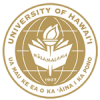Web Accessibility
This section was developed to acquaint faculty/staff with information about Web Accessible standards, priority of those standards as well as some solutions that can be implemented to help make course content more accessible.
A little Information
People with disabilities should not be excluded from all the benefits the Web has to offer. This is especially true for students with disabilities who want to enroll in online courses. One of the benefits of distributed learning is it allows students with disabilities who may experience difficulty commuting to classes able to take courses online at home. However this convenience can easily turn to a hindrance if the online class is not accessible.
At the University of Hawaii, we currently support the online course management system, Laulima (Collaboration & Instructional Course Tools). Laulima is based on the collaborative learning environment, Sakai. Sakai, meets the required standards set by the Web Access ability Initiative (WAI). To view current Sakai standards select the following link: Sakai Compliance.
Although Sakai is supported, what we as instructors, co-designers and support personnel develop and upload to our online course often does not meet web Access ability standards.
Required Standards for web Accessibility (as addressed by WAI - Web Accessibility Initiative)
There are 14 set design issues that need to be addressed during web development. Of those 14, certain standards fall into categories that we either MUST (Priority 1), SHOULD (Priority 2) or MAY (Priority 3) satisfy or address. To view a complete list of these standards as well as which "Priority" standards fall under, select the following link: http://www.w3.org/TR/1999/WAI-WEBCONTENT-19990505/full-checklist.html.
A little about HTML Editors
Many of the web accessibility standards are relatively easy to conform to using an HTML editor. There are many HTML editors available, free as well as pay for versions. Mozilla offers a free editor, Composer which is bundled with the browser which can be used (to download Mozilla use the following text link: http://www.mozilla.org/products/mozilla1.x/) while Adobe offers a pay for editor, Dreamweaver. Dreamweaver has many accessibility tools that can be added to the program which self checks for standards and is available in the Digital Media Center (KUY#206, 808-956-2719) for free use to all UH faculty and staff (to view more information about Dreamweaver use the following text link: http://www.adobe.com/products/dreamweaver/).
Select from the following list of standards for additional information, screen shots and directions on how to create an accessible webpage.
NOTE: I am unable to cover every cited standard, but what I have listed should be addressed when developing course materials for our online learning environment.
Web Accessibility Resources
> ADA - American Disabilities Act: http://www.usdoj.gov/crt/ada/.
> WAI - Web Accessibility Initiative : http://www.w3.org/WAI/intro/accessibility.php.
> Sakai Accessibility Information: Sakai Compliance



